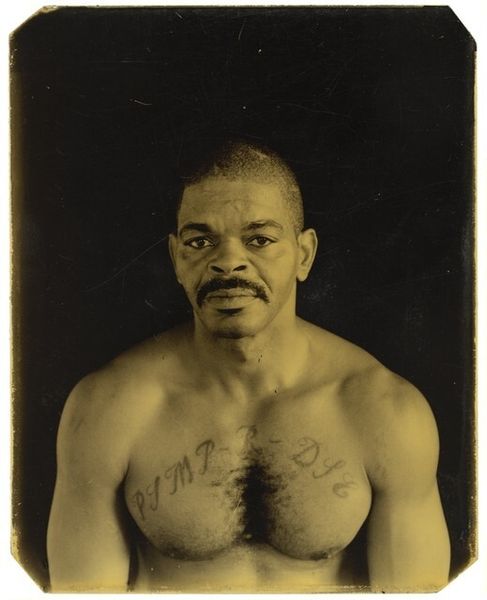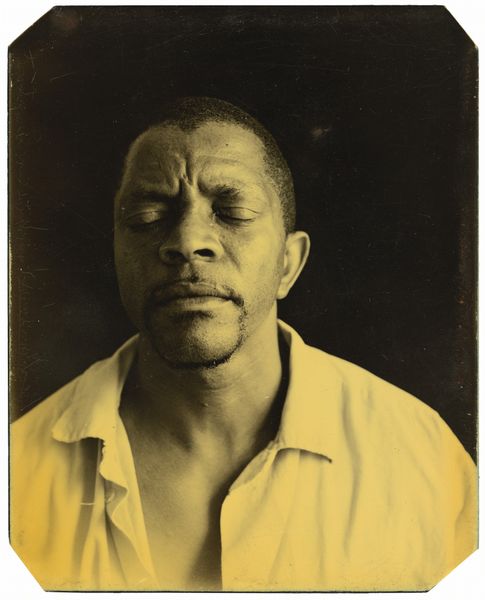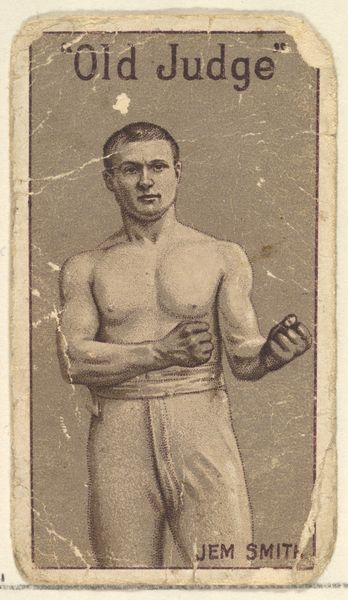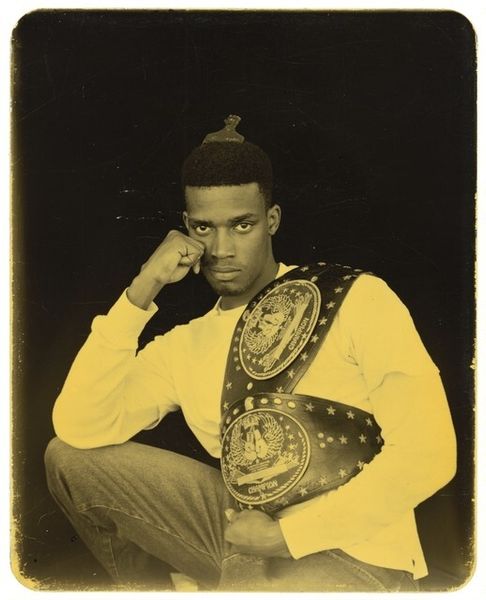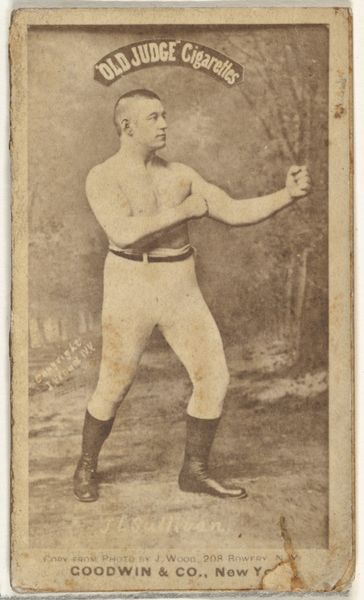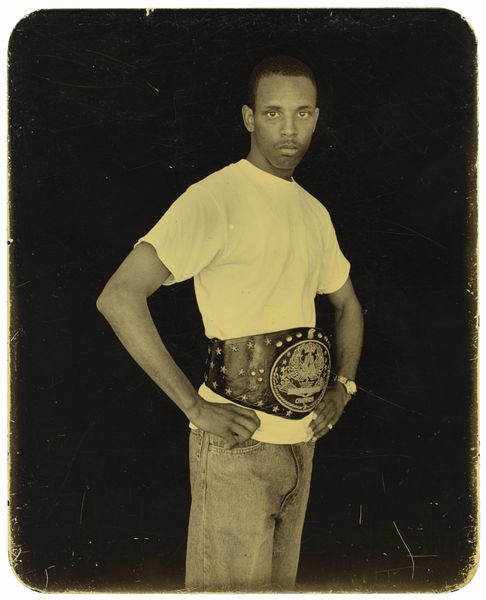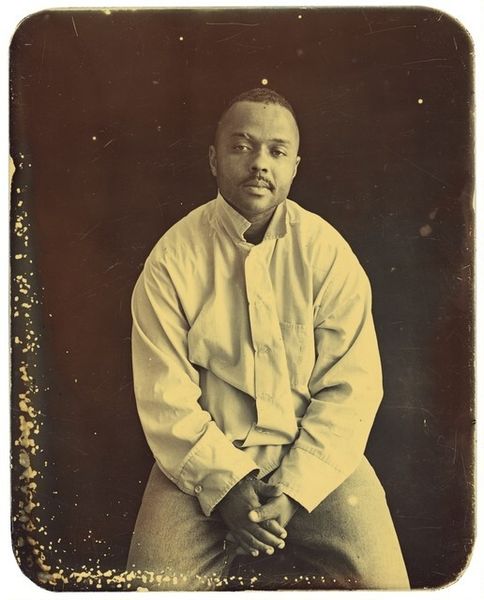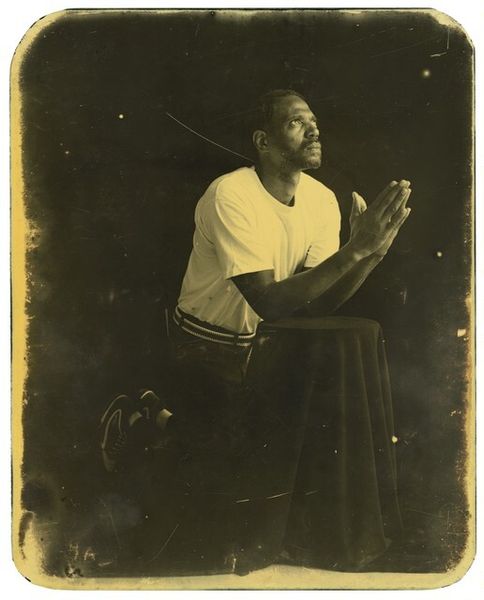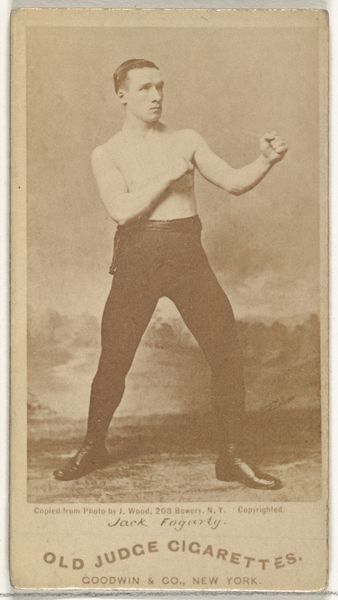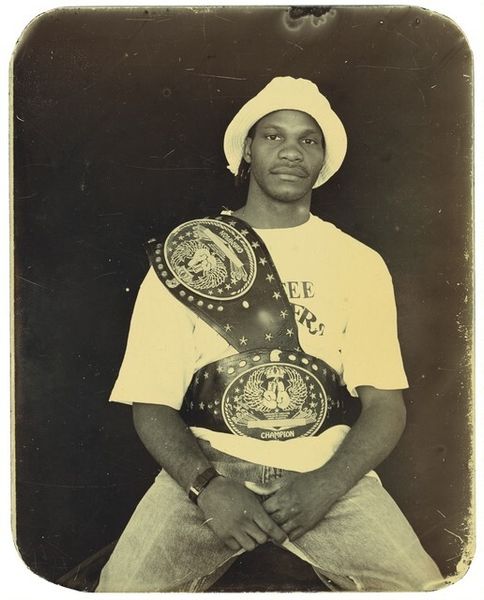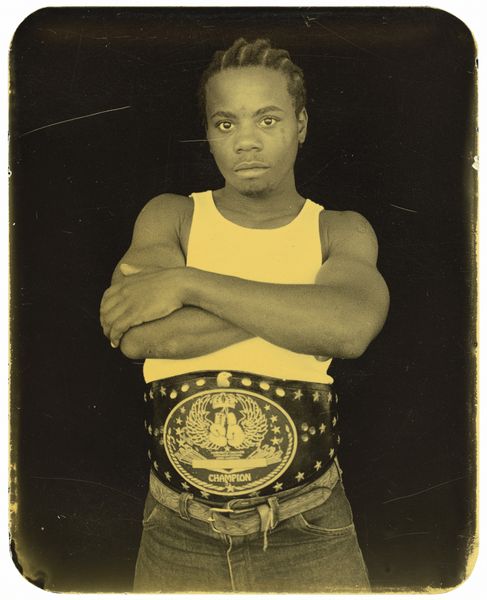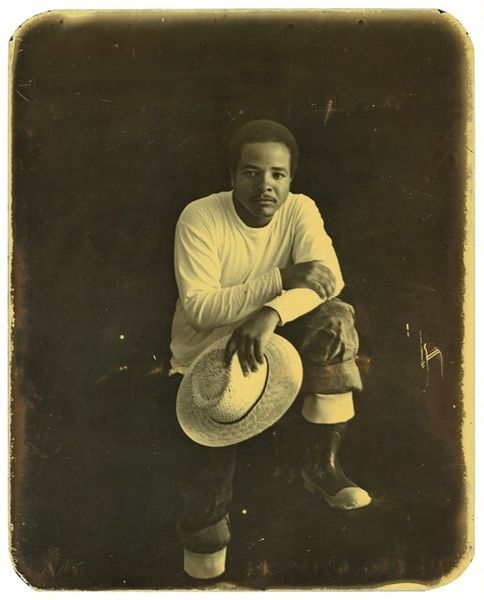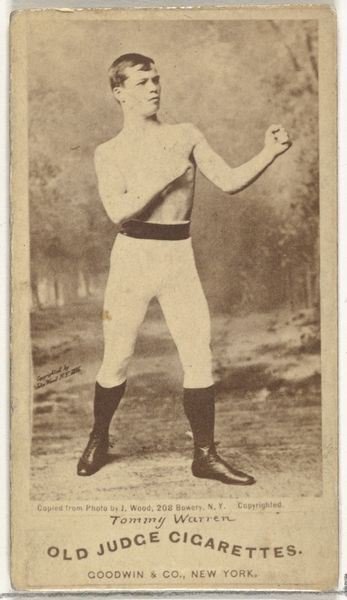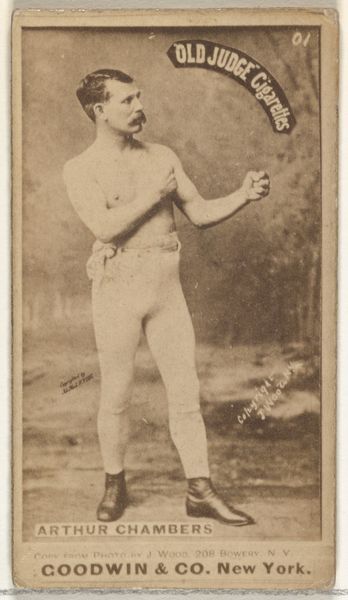
James Barnard Jackson, "Shake Back," Transylvania, Louisiana 1999
0:00
0:00
photography, gelatin-silver-print
#
portrait
#
contemporary
#
portrait
#
photography
#
gelatin-silver-print
#
nude
Dimensions: image/plate: 12.7 × 10.1 cm (5 × 4 in.)
Copyright: National Gallery of Art: CC0 1.0
Editor: This is Deborah Luster’s "James Barnard Jackson, ‘Shake Back,’ Transylvania, Louisiana," a gelatin-silver print made in 1999. The image's aged tones and composition make it look like a historical artifact rather than a contemporary piece. How do you see this image in the context of art history and materiality? Curator: For me, Luster’s use of the gelatin-silver process is a deliberate invocation of historical portraiture, specifically referencing 19th-century studio photography. Consider the labor involved – the chemical processes, the darkroom techniques, the deliberate staging. How does this emphasis on process shift our understanding of portraiture and the depiction of the Black male body? Editor: That’s a great point. So, rather than just seeing the *image* of James Barnard Jackson, you're prompting us to think about *how* that image was physically produced and what it represents. Do you think the materials themselves—the gelatin and silver—hold a significance beyond their function? Curator: Absolutely. Gelatin, traditionally derived from animal collagen, adds a layer of complex materiality, suggesting a life cycle and the natural world involved in this industrial process. The silver, of course, speaks to value, permanence, and the chemical reactions required to "fix" the image. Moreover, the fact it's from 1999 means it's at the twilight of the process as photography moves more to the digital age. So Luster chooses to resurrect this more archaic means of creation in a contemporary setting. Editor: It’s almost like the process itself is part of the message! I never considered that angle. Curator: Exactly! By foregrounding the materials and labor of production, Luster invites us to examine the cultural context surrounding the work’s making, and what those choices mean in today's setting, too. What will future audiences make of her choice? Editor: I’ll definitely think about materiality more consciously now. It's not just what is depicted, but how, and *why* that depiction happened through material choice.
Comments
No comments
Be the first to comment and join the conversation on the ultimate creative platform.
